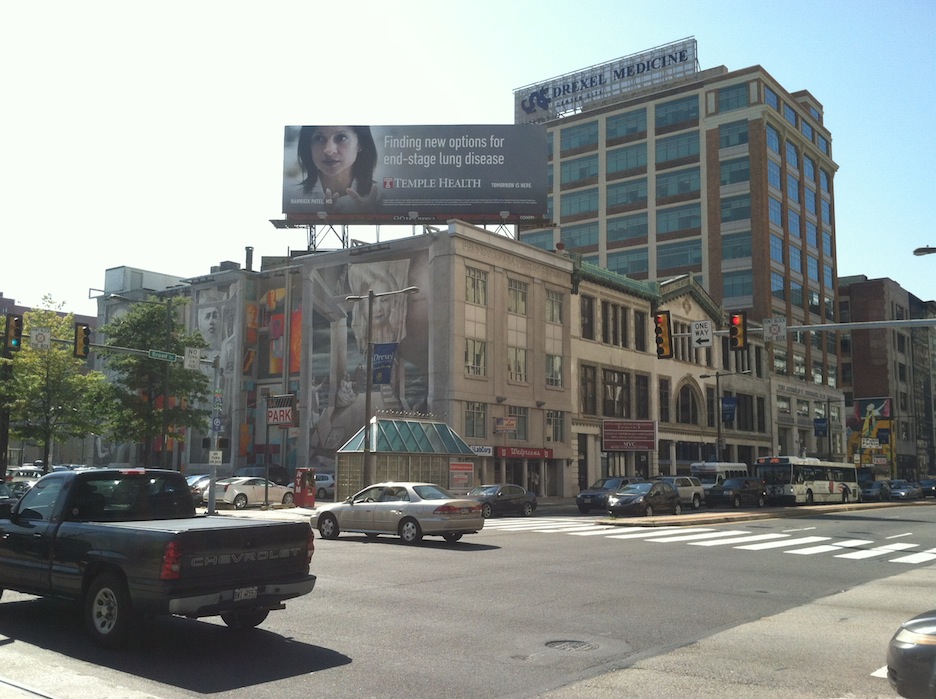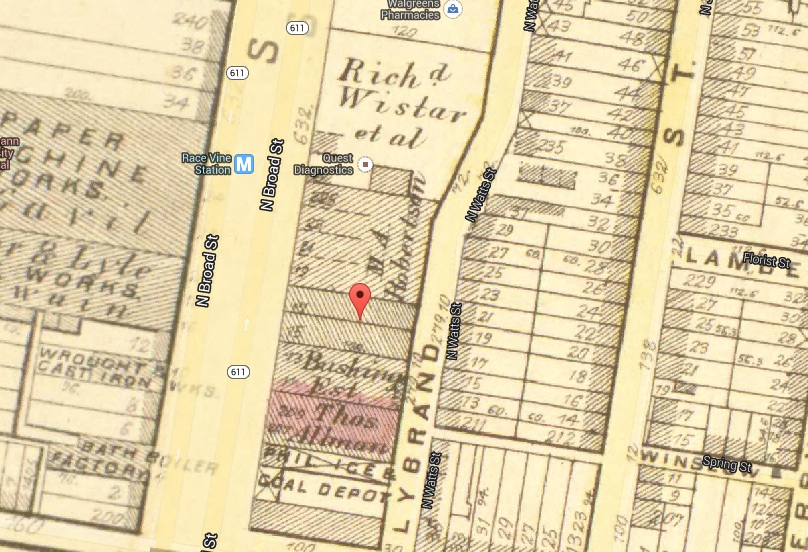Throughout its history, 219 N. Broad St. has been closely tied to the always-shifting identity of its surrounding area, beginning with its role in the industrialization of Philadelphia. The image below, taken from G.M. Hopkins’ 1875 Philadelphia Atlas shows that the property was owned by one M.A. Robertson.
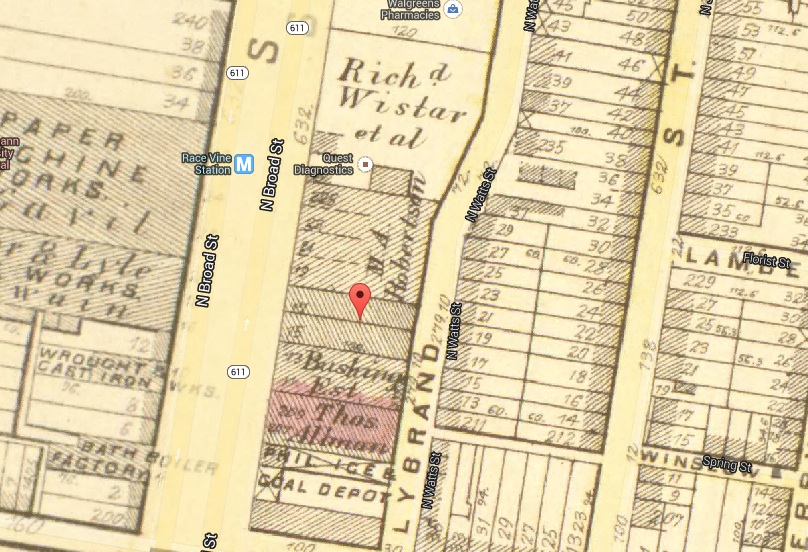
While we aren’t certain what Robertson did during his occupancy, we know that by 1895, the location had become a flour & grain depot. So denotes the image here below, taken from G.W. Bromley’s Philadelphia Atlas.
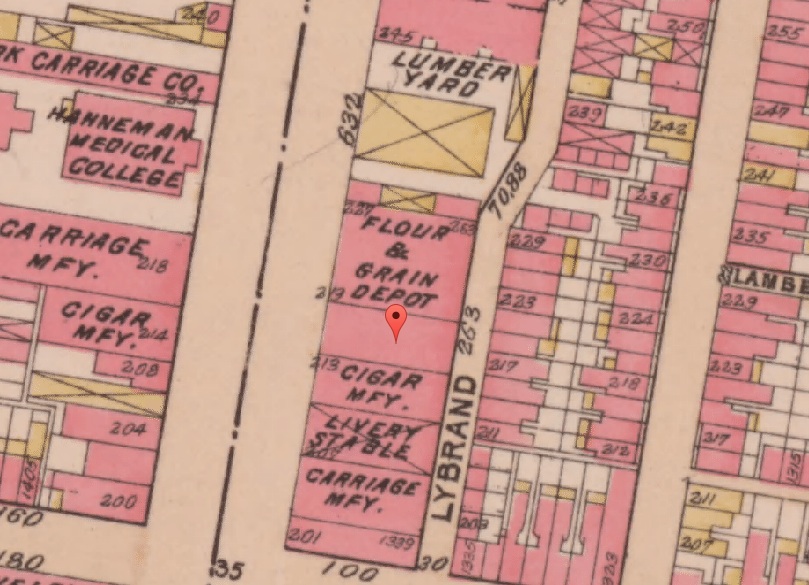
The turn of the century would bring massive change to North Broad Street, with the area emerging as Philadelphia’s Automobile Row. As the U.S. became a nation of motorists, the neighborhood just north of City Hall boomed with car dealerships, repairmen and parts specialists. An illustrious entrepreneur and partner of the REO Motor Company, George Flint purchased the buildings stretching between 219 and 225 N. Broad Street and subsequently erected the Flint Building in their place. According to Hidden City, the Flint Building opened in 1922 with a celebration atop the nearby Divine Lorraine Hotel. The photo below, taken from the Philadelphia Department of Records, shows the Flint Building in 1925, the ground level occupied by a Maxwell Chrysler dealership.
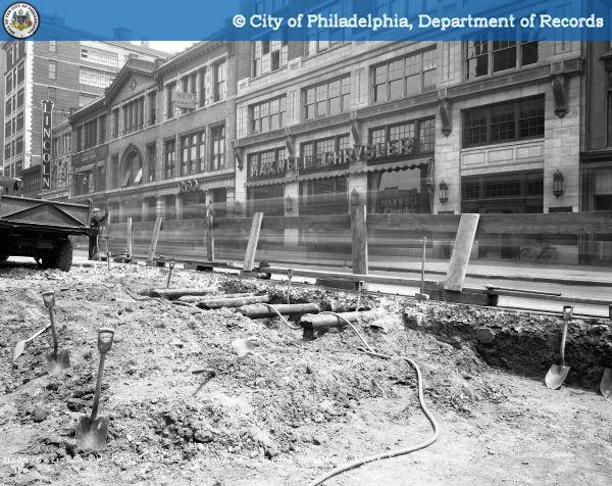
Flint oversaw an empire of operations from the top floors of the 11-story building. Over the ensuing decades, Flint remained entrenched but the character of North Broad, and thus the occupants of the building, shifted frequently. Hidden City notes that the middle floors became home to Philadelphia’s primary milk and dairy testing and regulatory agencies during the 30s and 40s. By the 1950s, with Flint out as well, the building was largely occupied by radio producers and retailers. So demonstrates the 1959 photo here below, taken from the Philadelphia Department of Records.
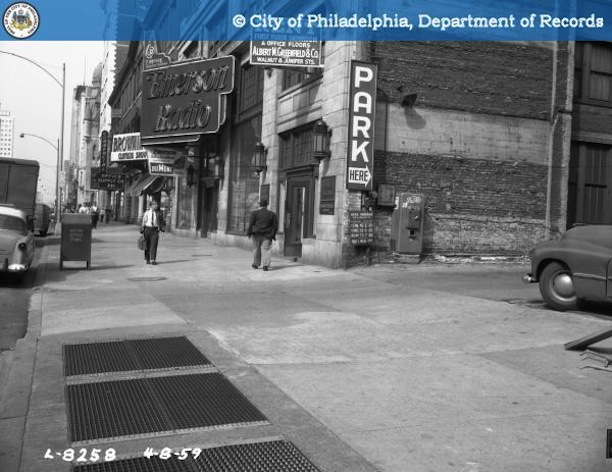
Over the course of the next three decades, Hidden City tells that the building came to be a preferred landing spot for a series of technical and vocational schools, including the Antonelli School of Photography, the Philco Technical Institute, the Educational Technology Institute, and the PSI Institute. The Philadelphia Department of Records photo below shows the building in 1983, hosting retail operations on the ground floor and office space above.
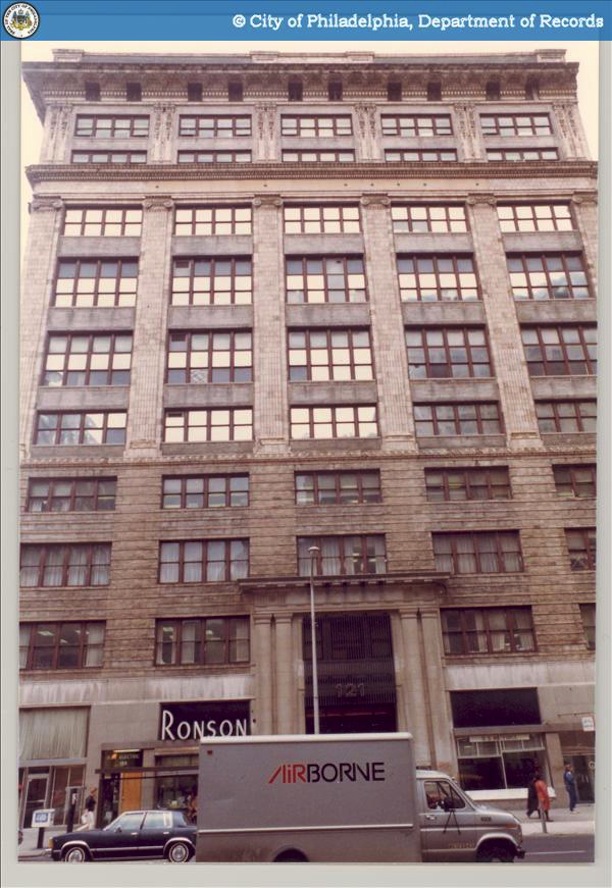
In the late 1990s, the Flint-Building’s across-the-street neighbor, Hahnemann Hospital, leased space. Then, in 2003, Drexel University purchased the building, subjected it to major renovations and re-dubbed it The Arnold T. Berman M.D. Building. And in case you weren't sure about who's running the show in the building, the billboard on the roof makes it pretty clear.
